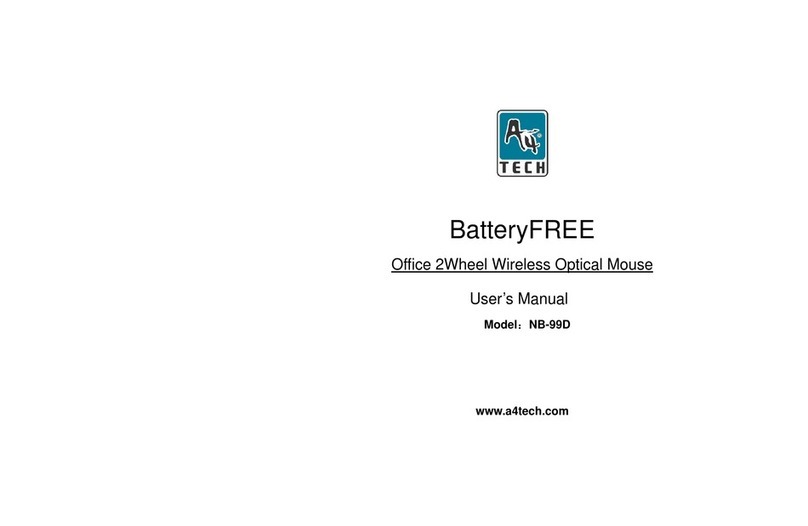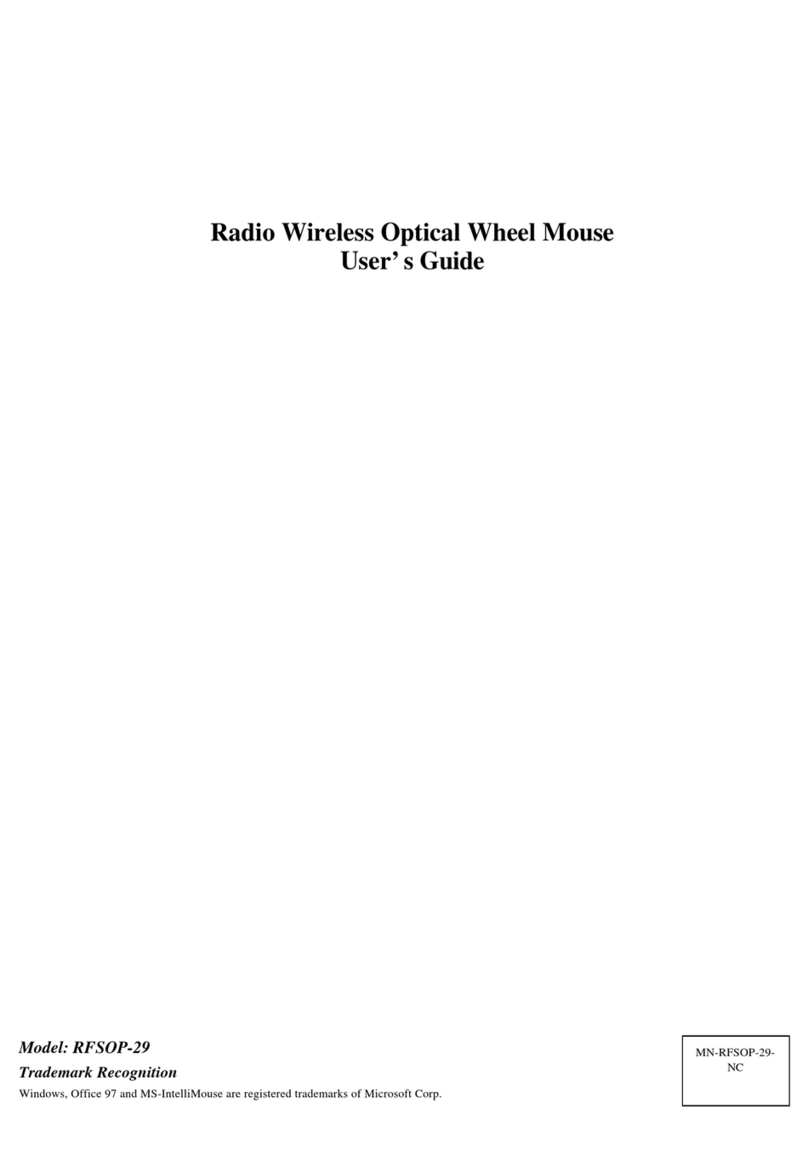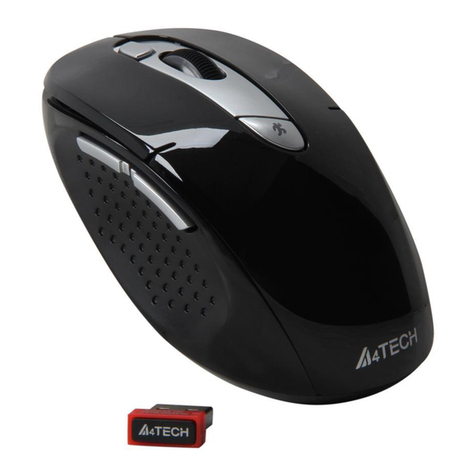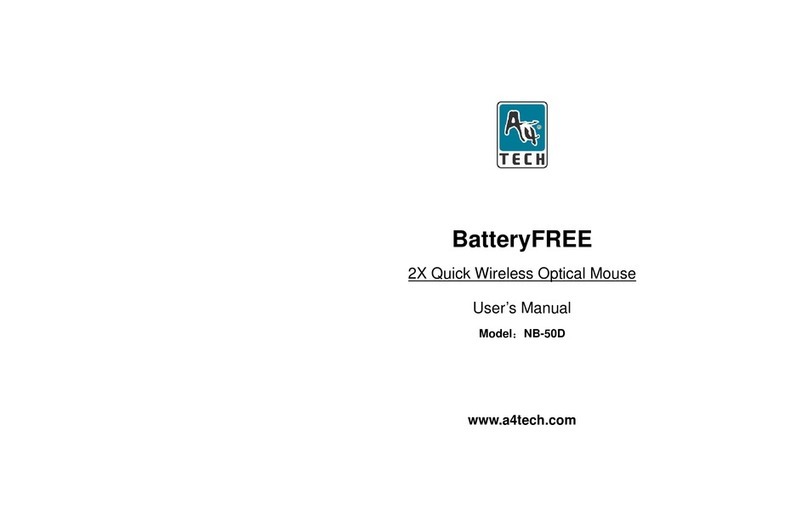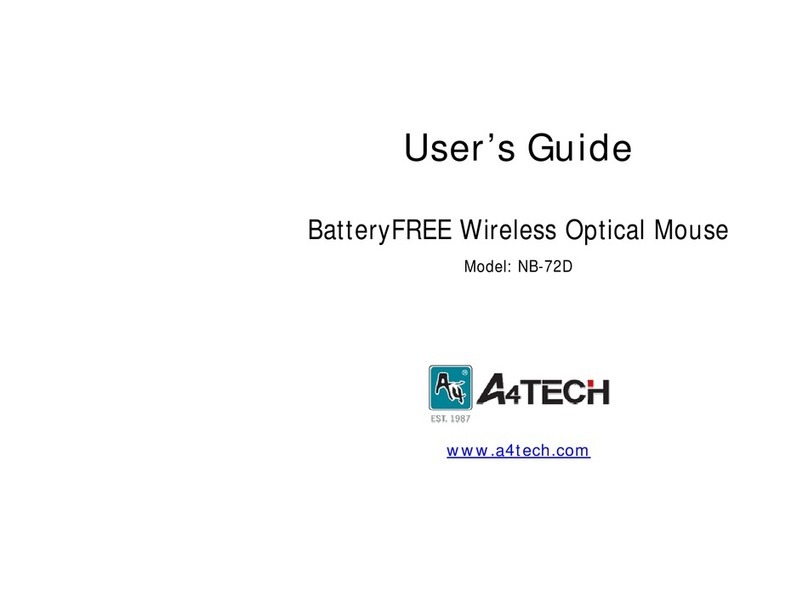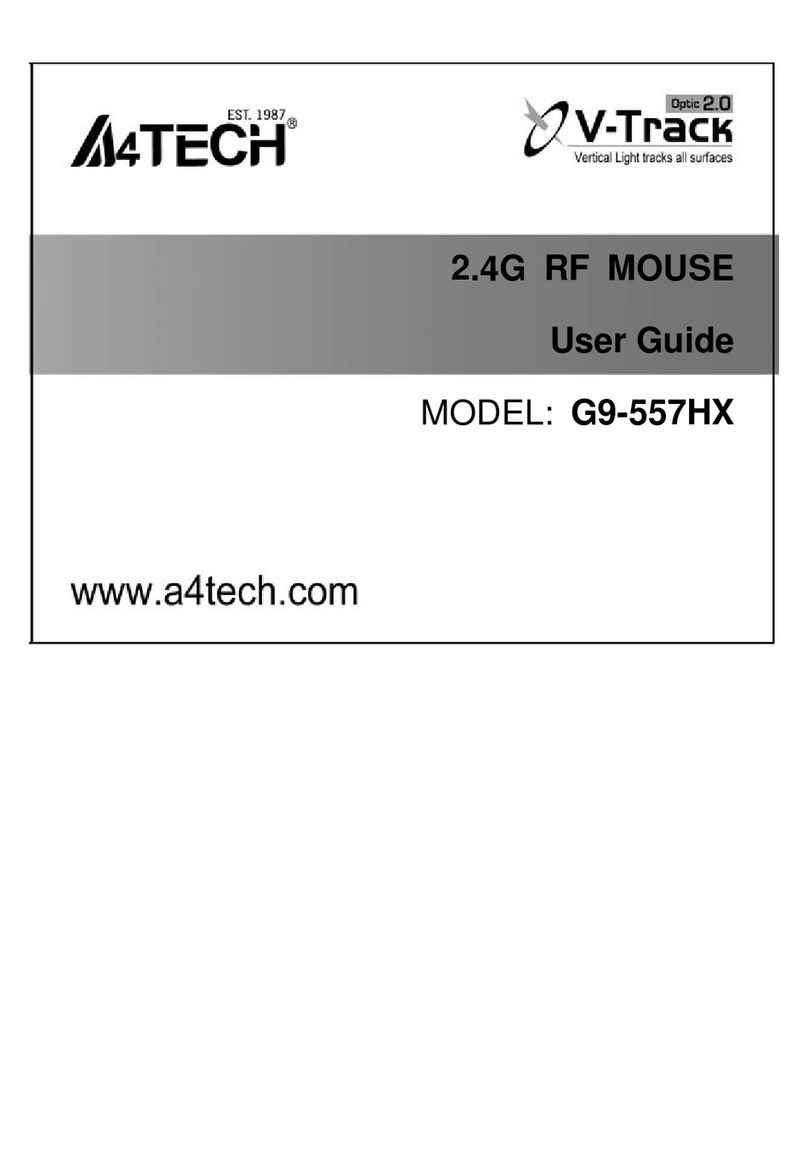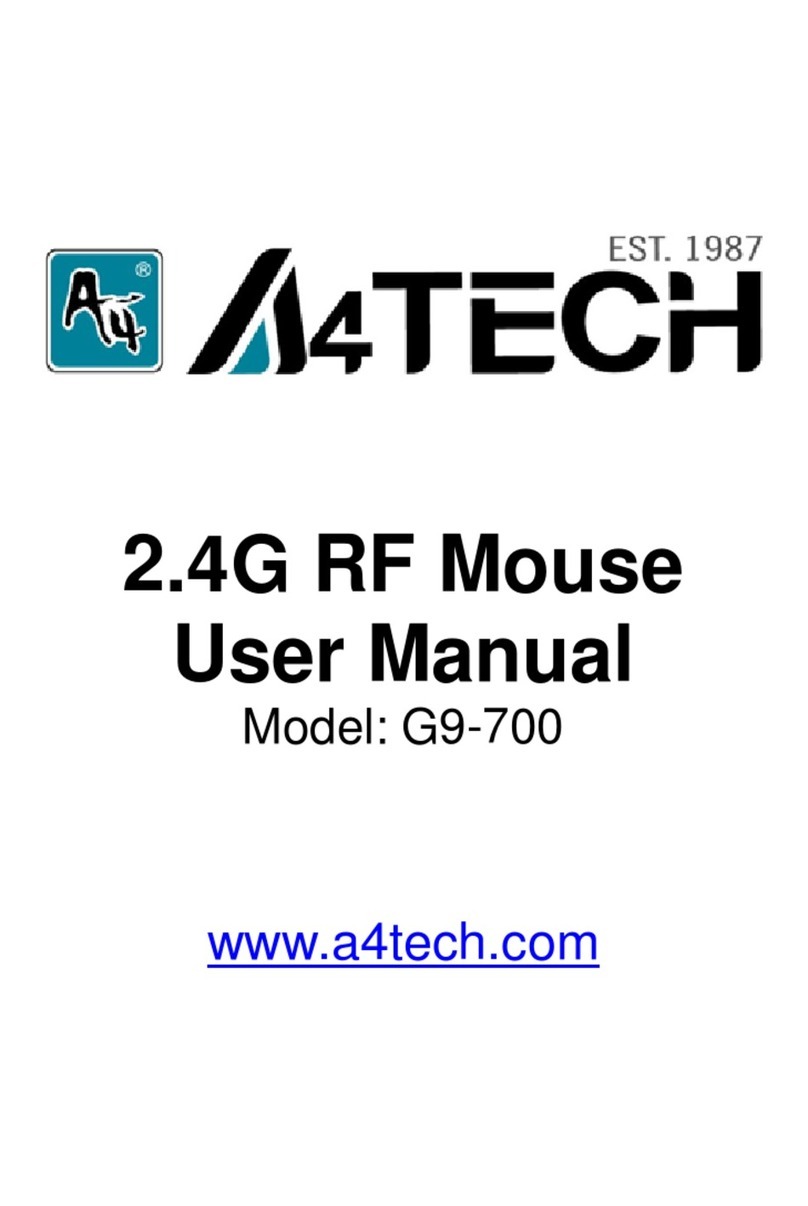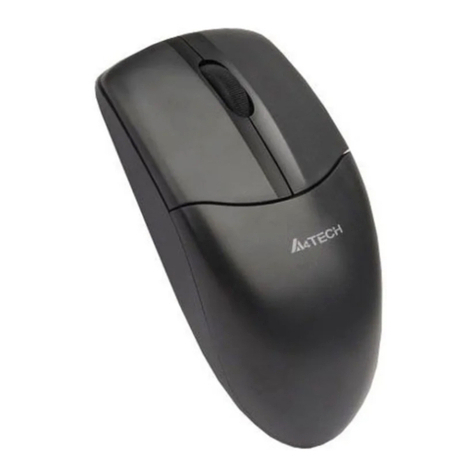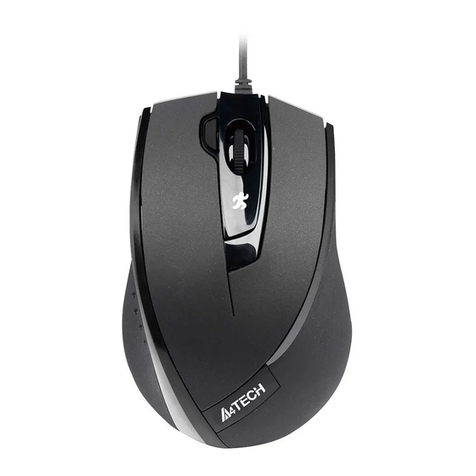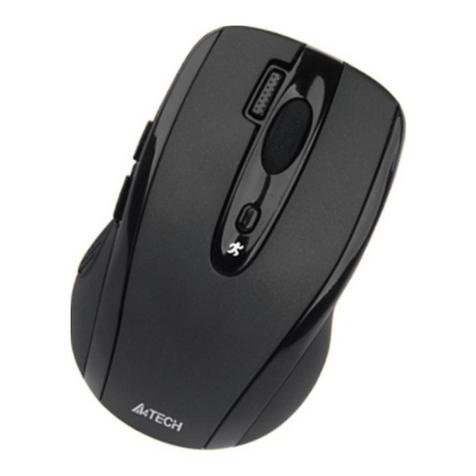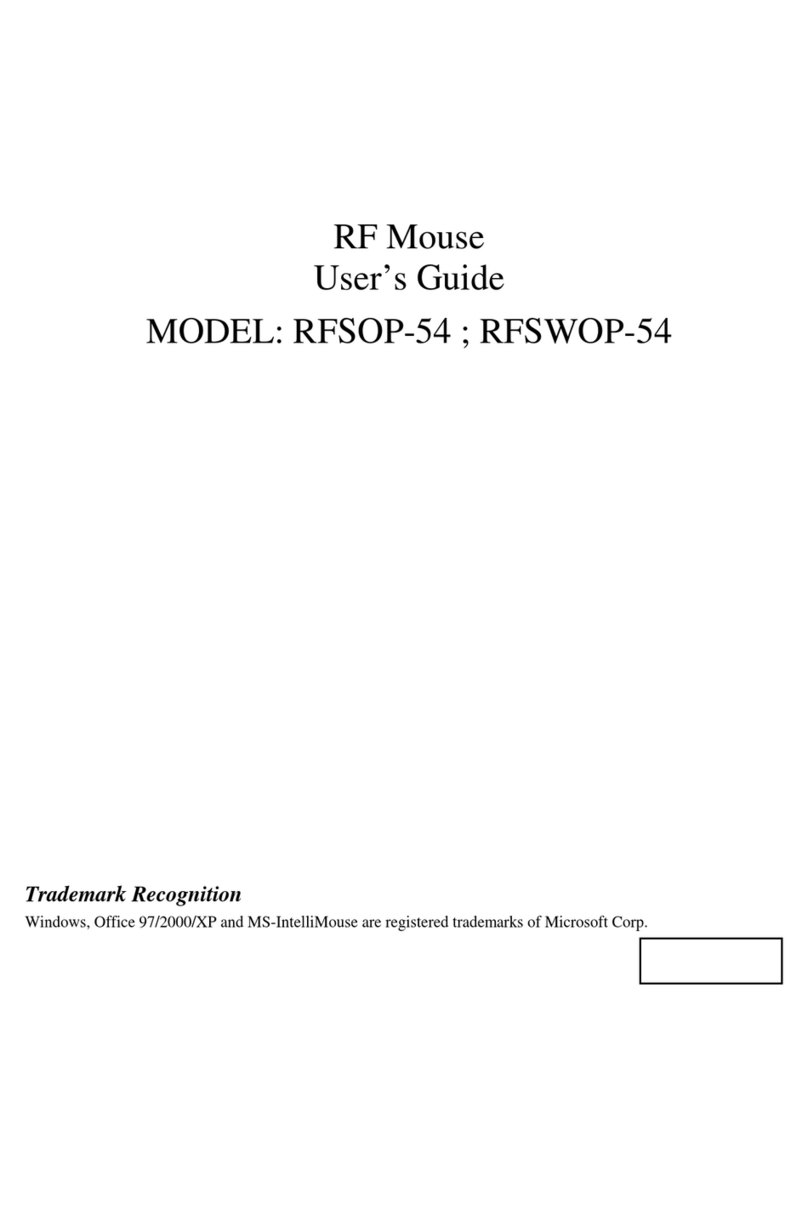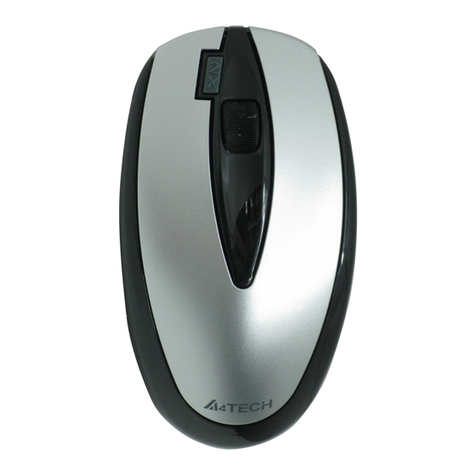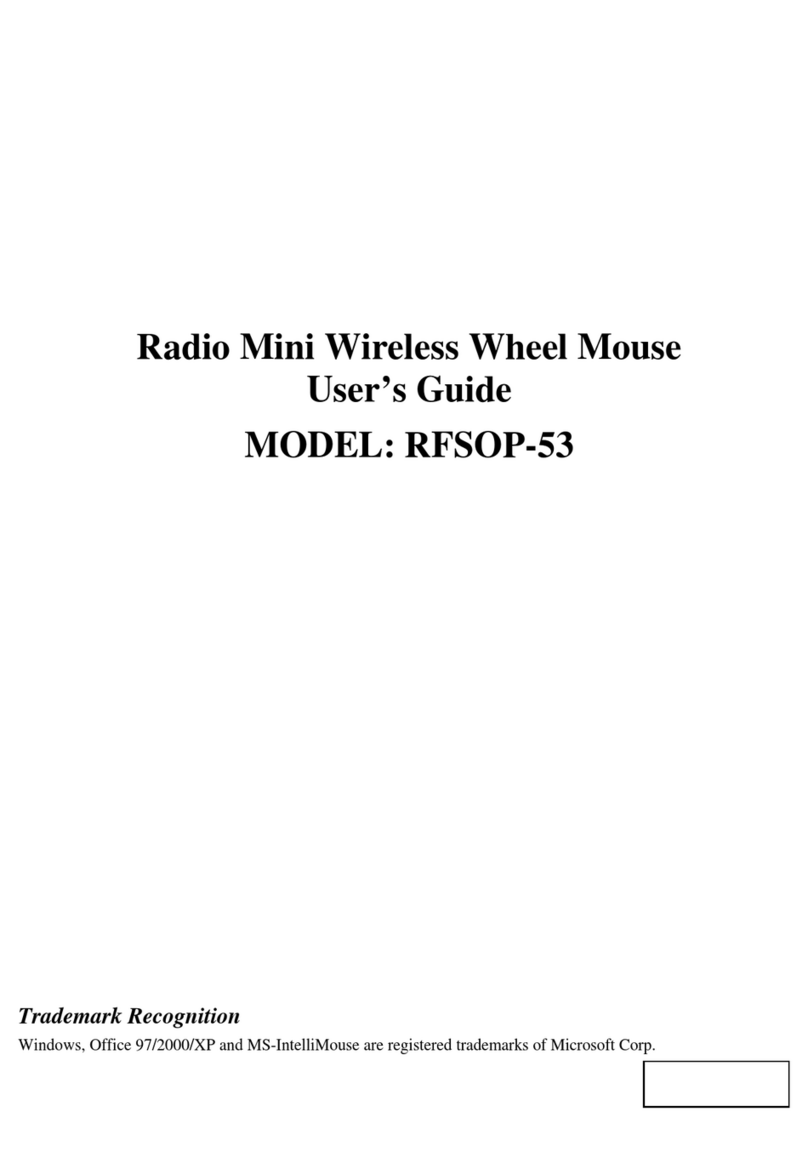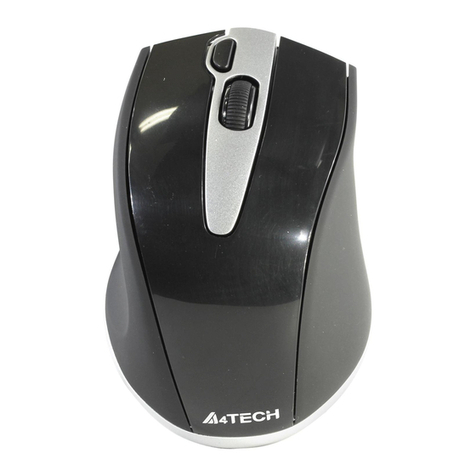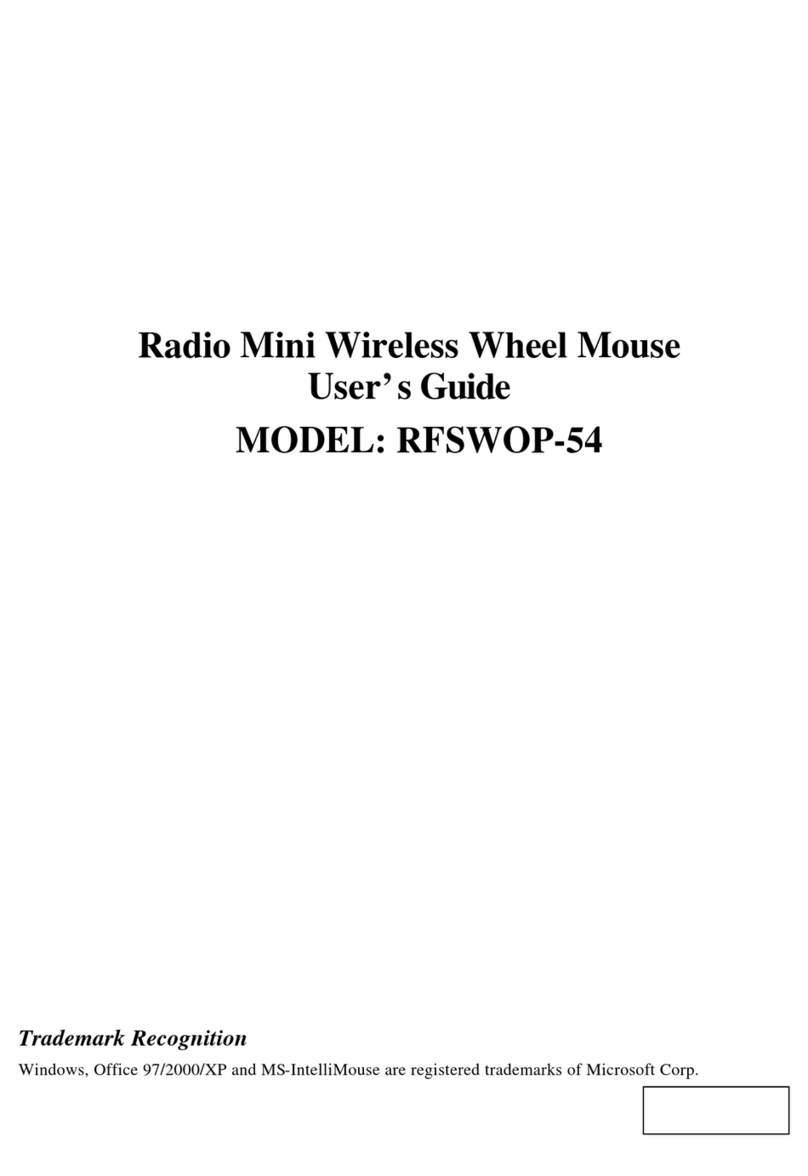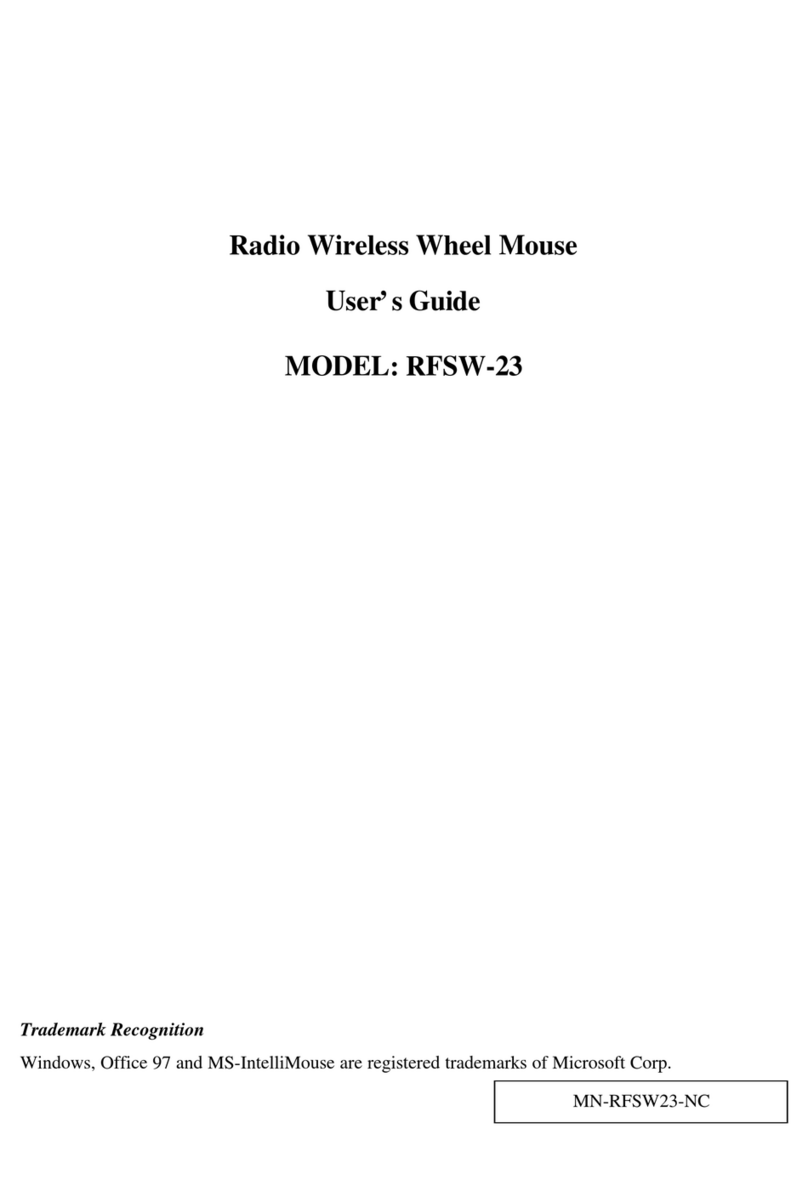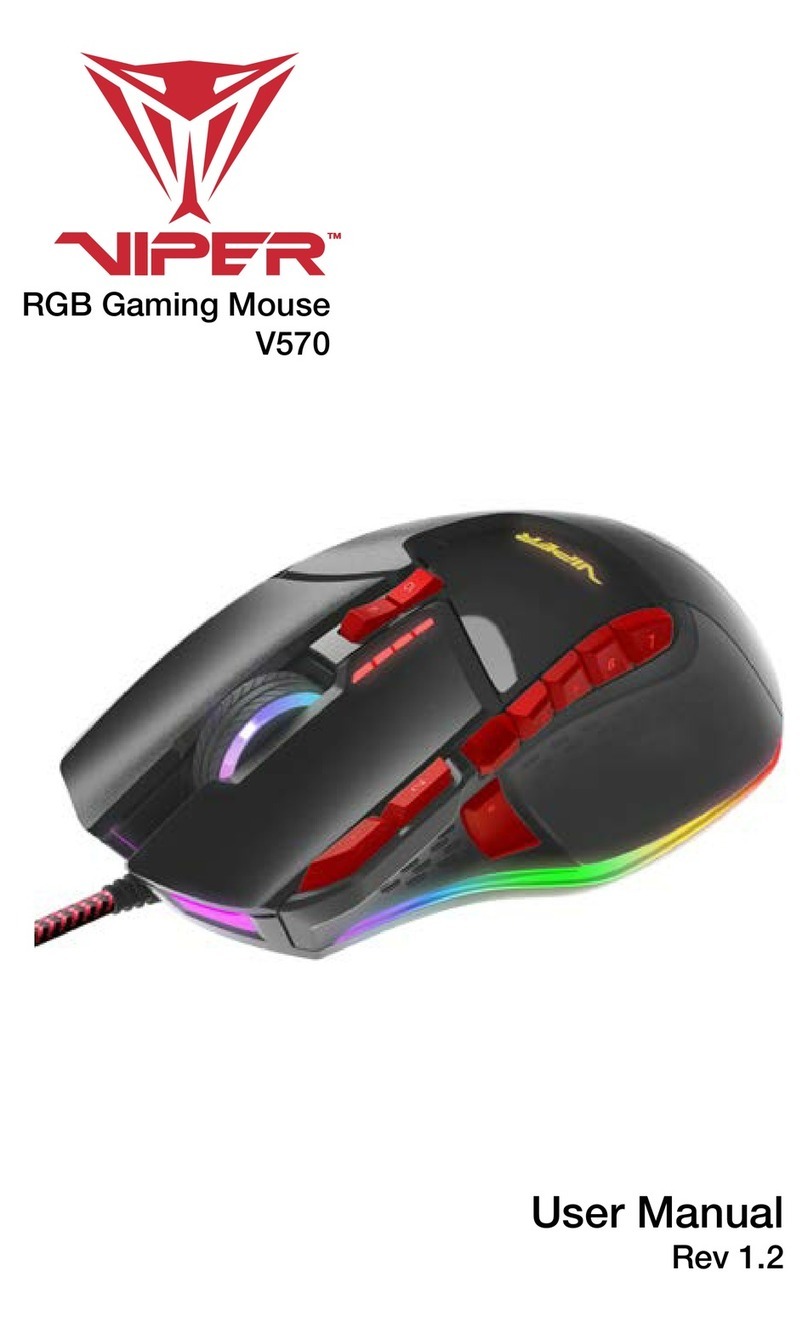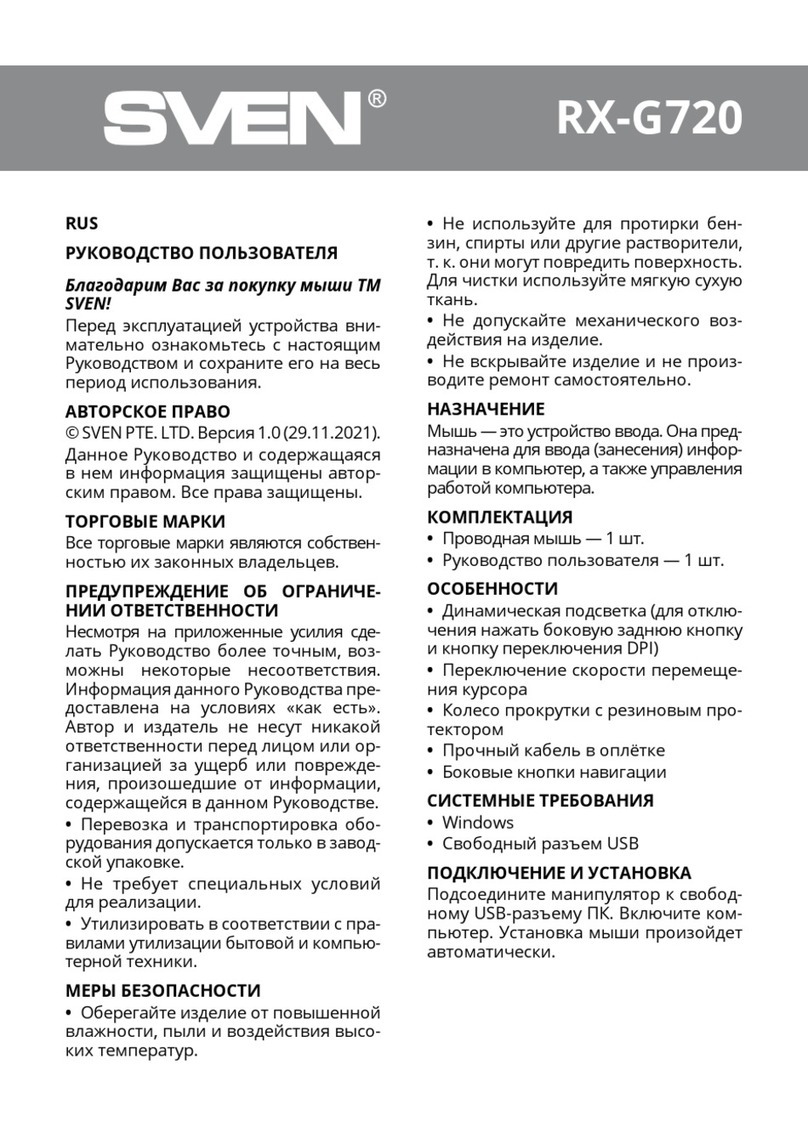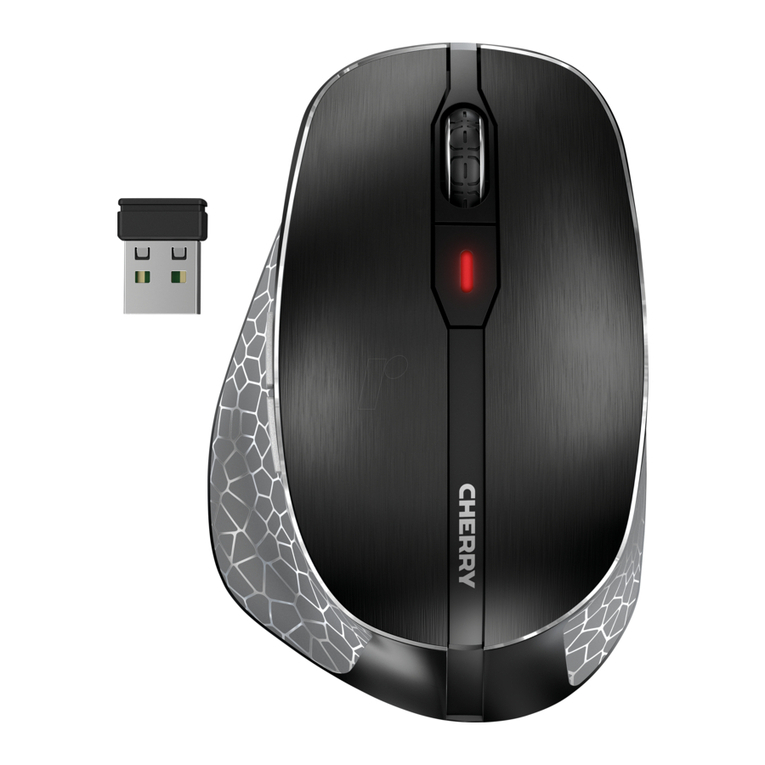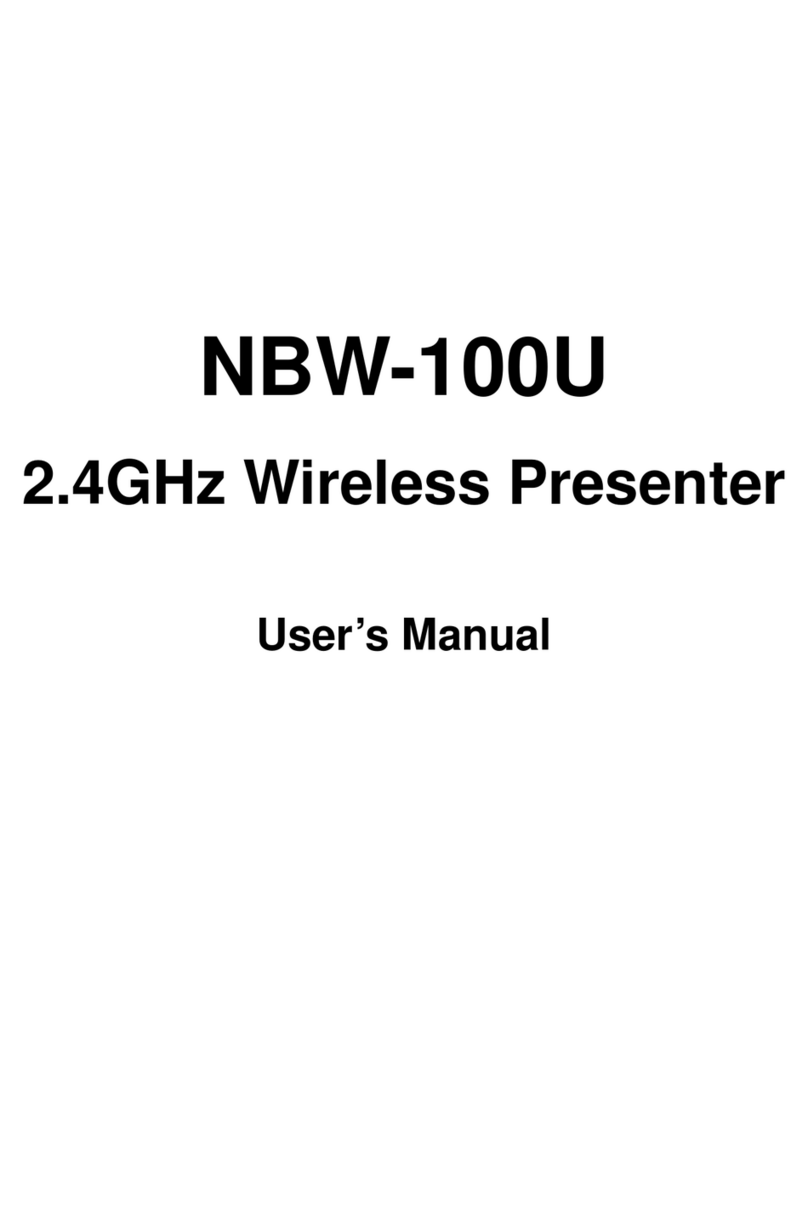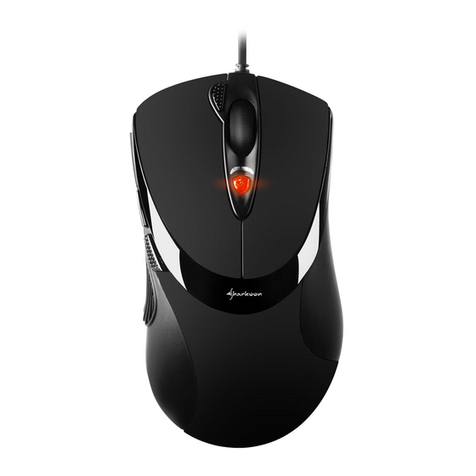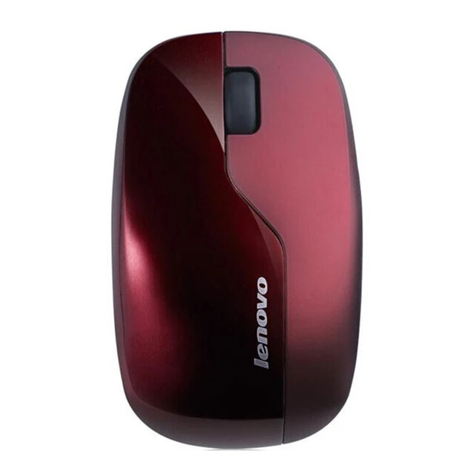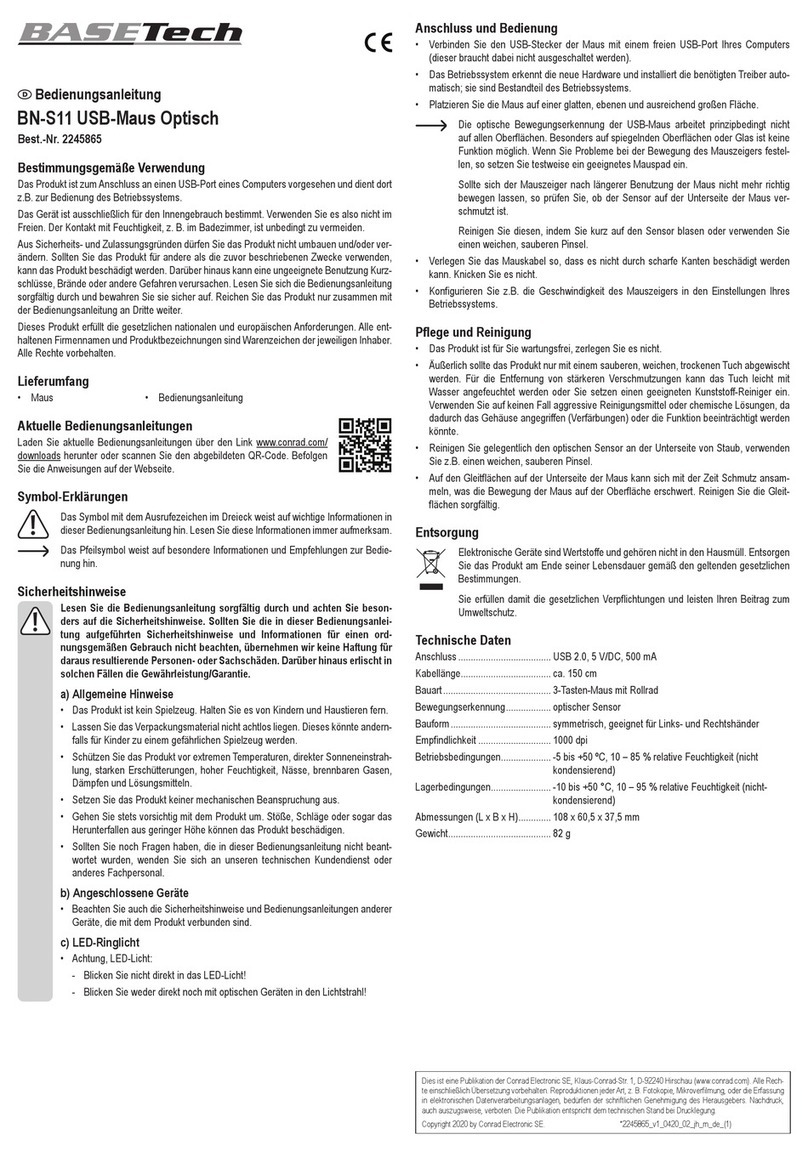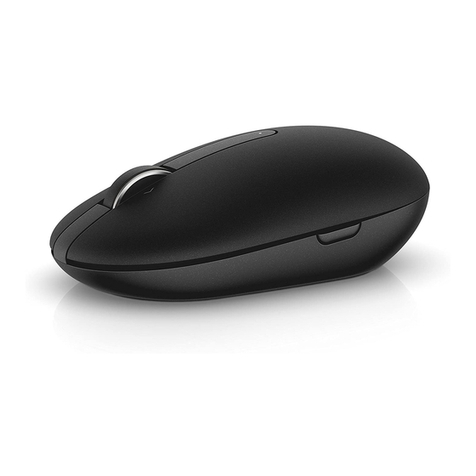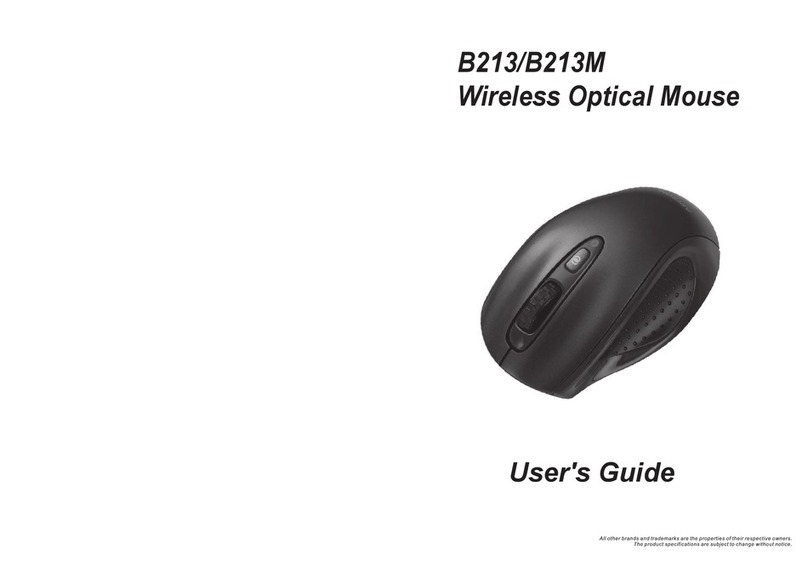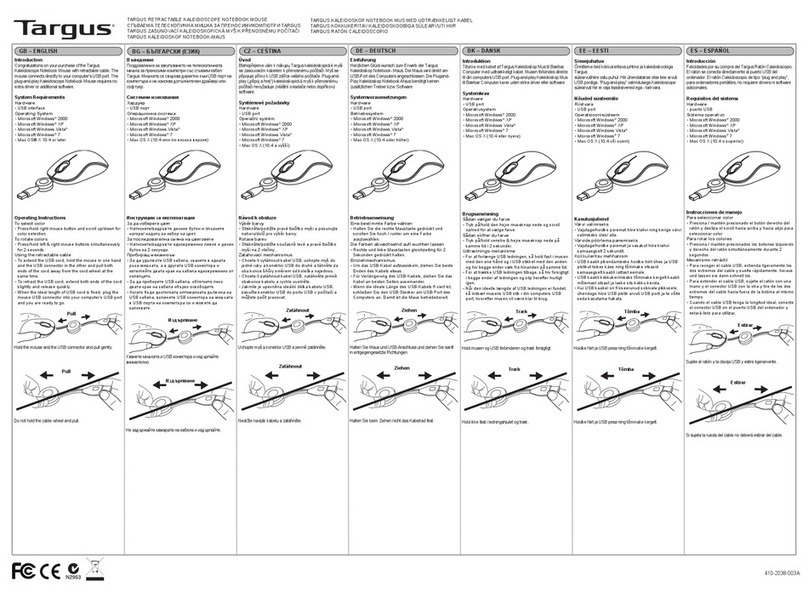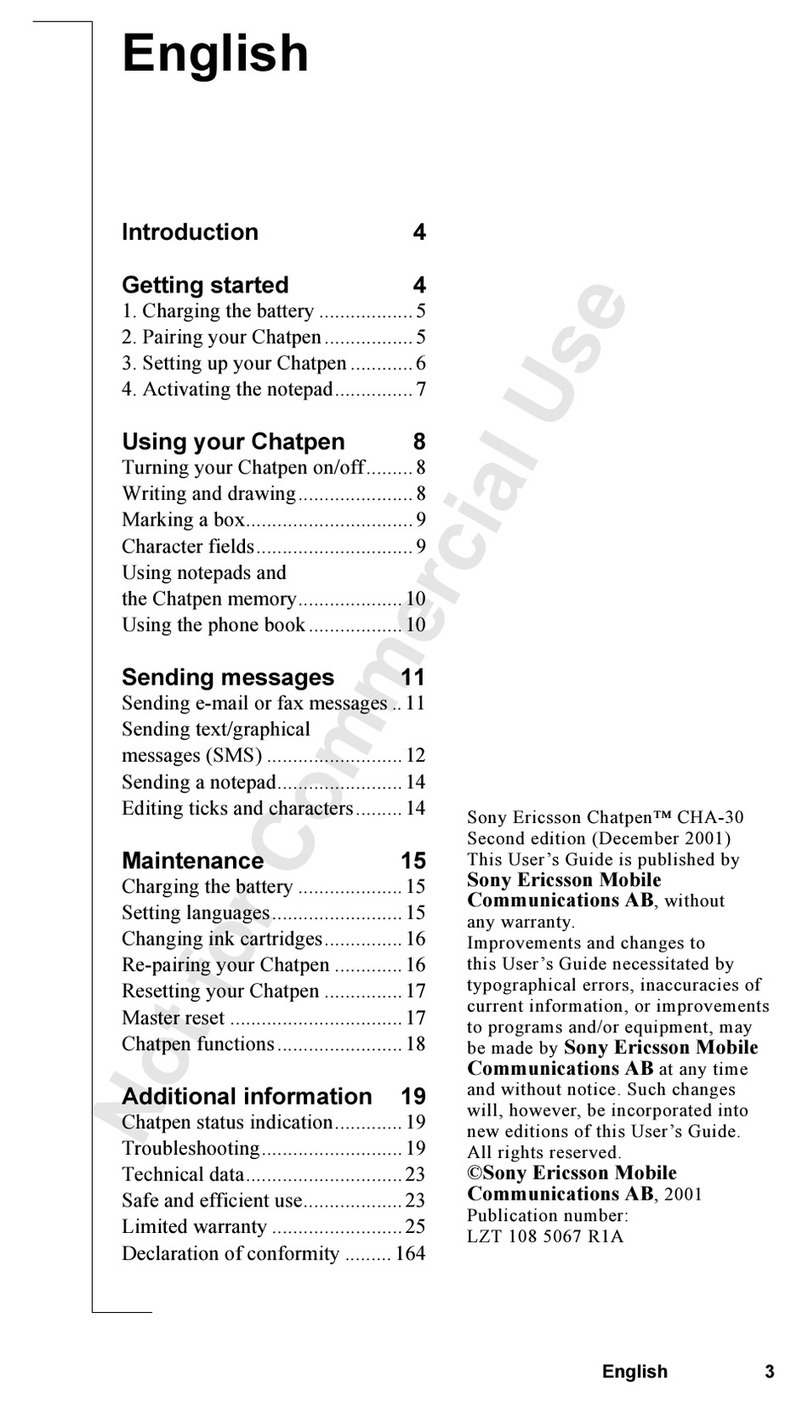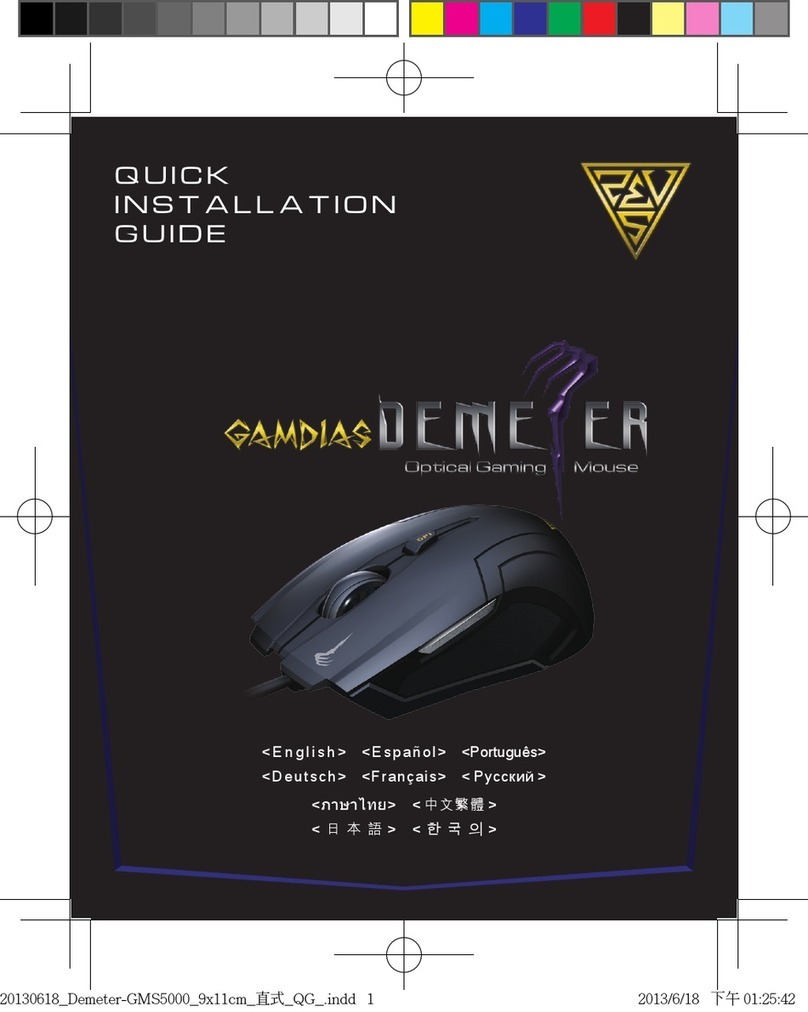
— 4 —
Checking the Batteries power
To check the battery power, right-click the mouse icon in the
Taskbar. Choose the “Check RF-Mouse Status” option to display the
RF-Mouse Status window. The current battery percentage charge is
shown.
Installing the Mouse Software
Before you can take advantage of the many features your mouse offers, you must install the driver.
The driver is on the installation diskette that came packaged with your mouse.
Windows 95/98/2000/NT4.0/ME/XP installation
1. Connect the mouse to your computer.
2. Insert the installation diskette into your floppy disk drive.
3. Click the Start button and then click Run.
4. In the Run dialog window, type A:\setup, where “A” is the letter of your floppy disk drive.
5. Click OK and follow the instructions on your screen to complete the installation.
The RF-Mouse ID code
Each RF-Mouse is assigned a unique ID code at manufacture, so the receiver only picks up the signal
from your mouse and prevents other RF-Mouse radio signals from operating on your computer. This
feature can also be disabled, allowing other RF-pointing devices to operate your computer.
Connecting the RF-Mouse ID Code
When the driver installation is finished your
computer reboots and the RF-Mouse window
(shown on the right) appears.
CONNECT ID: Move the RF-Mouse for a few
seconds to establish a connection, then click
Connect ID. The unique ID code of your mouse is
recognized and another RF pointing device will
not function on your computer.
Exit: Click Exit if no other RF pointing devices
are within 3 meters range or if you want other RF
pointing devices to be able to access your
computer.
Changing the RF-Mouse ID Code
You can use a new RF-Mouse on your computer without changing the Radio receiver; you just need to
change the ID code. Refer to the following:
1. Press [Shift + Alt + F11] or [Shift + Alt + F12] to call up the RF-Mouse ID Code window.
2. Move the RF-Mouse for a few seconds to establish a connection, then click Connect ID.
3. The new ID code is Connected and the RF-Mouse window closes.
4. Click Exit to close the RF-Mouse ID code window.
